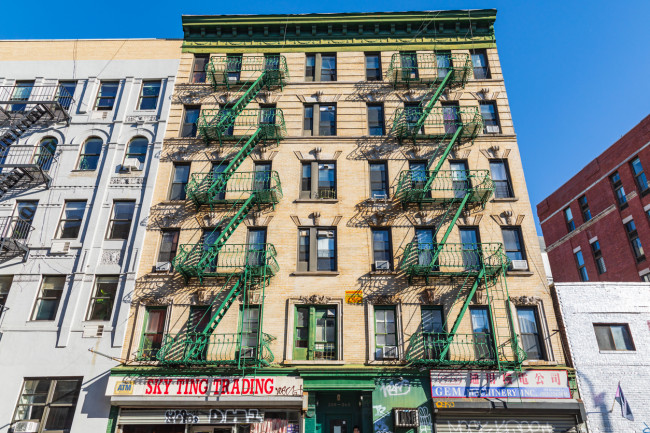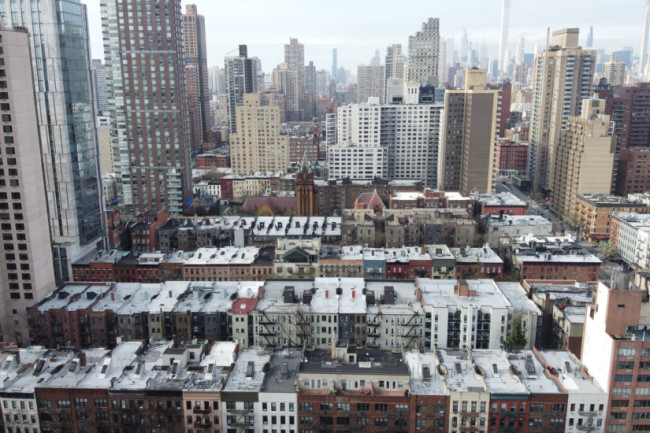NYC's rental market is still bonkers—for now

New leases may seem pricey, but Manhattan’s net effective median rent last month was just 12.3 percent higher than it was two years ago in March 2020—prior to the shutdown taking effect.
iStock
The New York City rental market last month continued to settle back into its pre-pandemic groove.
Of course, that’s cold comfort for the renters hitting the pavement in search of places to live. To them the market probably feels bonkers, thanks to a huge drop in listings, increasingly high rents, and bidding wars for rentals—which continue to account for about 20 percent of deals in Manhattan.
But a comparison by the Elliman Report for Manhattan, Brooklyn, and Queens rental markets for March finds rents and listings are just above levels seen prior to the start of the pandemic in NYC two years ago—in March 2020.
Take for example Manhattan’s net effective median rent—which factors in concessions from landlords. It was $3,644 in March, a jump of 22.5 percent from March 2021 (in February, the jump was a record 27.7 percent over February 2020)—a shock for renters who scored deals a year or so ago and may be on the hunt for a new place now.
“Every month beginning in October was either the highest or second highest” increase in net effective median rent for Manhattan until this month, says Jonathan Miller, president and CEO of appraisal firm Miller Samuel and the author of the report. While this is not a slowdown—it is still significant growth—that “upward trajectory seems to be throttling back,” Miller says.
Rents have now settled just above pre-pandemic levels. Manhattan’s net effective median rent last month was 12.3 percent higher than it was two years ago in March 2020 ($3,477)—prior to the shutdown taking effect.
The shutdown caused inventory to skyrocket, Miller notes—and now those inventory levels are “coming down almost as quickly as they surged.”
Last month, listings fell in Manhattan by 75.9 percent to 4,423 but compared to two years ago, when it was 4,258—listings are up by 6.4 percent.
March was also the first time in 15 months that in Manhattan, non-doorman median rent grew faster on an annual basis than median rents in doorman buildings—which are a proxy for the upper half or luxury segment of the market.
Prior to last month, the rental market has been characterized by weaker demand for non-doorman rentals, reflecting the severe economic damage inflicted during the pandemic, Miller notes.
That shift was also mirrored in bidding wars for doorman rentals, which commanded an 18.7 market share last month, while for non-doorman rentals, bidding wars made up 21.1 percent of the market, he says. The average payment offered above what the landlord is asking was also higher for non-doorman rental buildings than for doorman.
What renters can expect going forward
The typical pattern is for leasing activity to increase each month until August—and barring any major event, renters are likely to see that traditional pattern unfold. More renters signing leases means you can reasonably expect rents to continue to rise in NYC, Miller says.
As demand increases, renters can also expect see fewer apartments with concessions like free months or owner-paid broker fees. In March, 17.7 percent of Manhattan leases came up with a concession—the lowest market share since September 2016, when it was 15.6 percent.
Need help finding an apartment you love in one of the most competitive markets ever? Put your search into the capable hands of The Agency, a tech-savvy real estate brokerage founded by a pair of Yale grads in response to the frustrating apartment-search experiences of classmates and colleagues. The Agency will charge a broker's fee of 10 percent of a year's rent on open listings instead of the usual 12 to 15 percent if you sign up here. Bonus: The agents at The Agency are a delight to deal with.
Brooklyn rents surpass pre-pandemic levels
In Brooklyn, net effective median rent exceeded pre-pandemic levels in March for the first time, according to the report, hitting $2,955. New leases rose annually for the first time in three months while listings fell year over year by more than 80 percent for the fourth, consecutive month.
For Queens, net effective median rent rose year over year for the seventh consecutive month to $2,827, new leases jumped annually for the 12th, consecutive month, and listings fell year over year by more than 70 percent for fourth, straight month.
The Corcoran Group also released it Manhattan and Brooklyn rental reports for March, which note that the steady climb in pricing has slowed.
Gary Malin, COO, points out that while rents remain at record highs overall, the NYC rental market is not the same everywhere.
“Circumstances vary widely across property types and neighborhoods,” he says. “Competition for apartments in doorman buildings and in prime locations can be intense, with units leasing sight-unseen or for over the asking rent. In contrast, the change in conditions for walk-up units and in parts of Upper Manhattan and Brooklyn has not been nearly as extreme.”
Median rents increased 76 percent year-over-year in Soho/Tribeca, while pricing in Morningside Heights and Harlem experienced a much less dramatic 7 percent rise.
“While everyone’s priorities are different, the market often rewards those who are willing to be flexible,” he says.
MNS also released its February rental market reports for Manhattan, Brooklyn, Queens, and the Bronx—the reports drill down into neighborhoods across the four boroughs and look at rents by number of bedrooms and compare doorman vs. non-doorman buildings. Some findings from the reports include: The largest monthly decreases in Manhattan were for non-doorman one bedrooms on the Upper West Side, non-doorman studios in the East Village, and non-doorman one bedrooms in Tribeca.
You Might Also Like




























